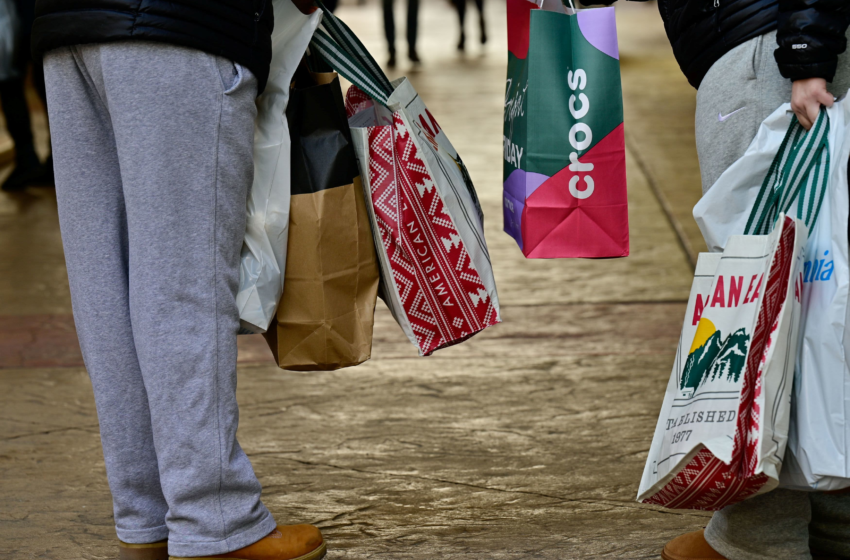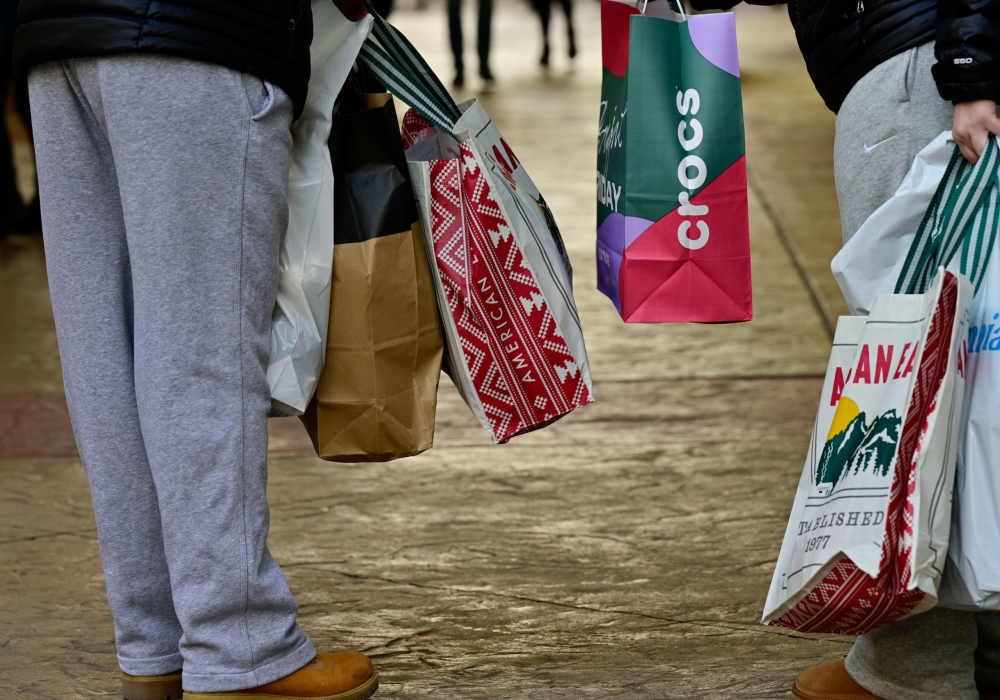Shoppers with bags from various stores stand next to each other as Black Friday sales begin at The Outlet Shoppes of the Bluegrass in Simpsonville, Kentucky, November 26, 2021.
Jon Cherry | Reuters
Traffic at retail stores on Black Friday dropped 28.3% compared with 2019 levels, as Americans shifted more of their spending online and kicked off their shopping earlier in the year, according to preliminary data from Sensormatic Solutions.
Traffic was up 47.5% compared with year-ago levels, Sensormatic said. This time in 2020, many shoppers stayed at home due to fears around the coronavirus pandemic and as retailers operated on somewhat reduced hours.
“It’s clear shoppers are shopping earlier this season, just as they did last season,” said Brian Field, senior director of global retail consulting at Sensormatic. He added that the two main reasons shoppers are spreading out their holiday purchases are ongoing concerns about Covid and worries about the supply chain.
The peak time for Black Friday shopping in stores was 1 p.m. to 3 p.m., similar to trends in past years, Sensormatic said. Black Friday is still predicted to be the busiest in-store shopping day of the season, according to Sensormatic.
On Thanksgiving day, visits to brick-and-mortar stores cratered 90.4% from 2019 levels, Sensormatic found. Retailers including Target, Walmart and Best Buy opted to keep their doors closed to customers on the holiday. Target has said it will be a permanent shift.
Field said that shopper traffic on Black Friday was closest to returning to 2019 levels in the South, followed by the Midwest and then the West and Northeast. He doesn’t believe mounting fears around the new Covid variant, omicron, had any impact on consumers’ behavior on the day.
“If you start seeing outbreaks in the U.S., the thing that I think would drive [traffic down] would be if governments and communities start locking down again,” Field said. “Otherwise, I think the trends will be very similar to what we expect them to be.”
Black Friday online spending falls from 2020 levels
Online, retailers rang up $8.9 billion in sales on Black Friday, down from the record of about $9 billion spent on the Friday after Thanksgiving a year earlier, according to data from Adobe Analytics. It marked the first time ever that growth reversed from the prior year, Adobe said. Adobe analyzes more than one trillion visits to U.S. retail sites, with over 100 million items in 18 different product categories.
On Thanksgiving day, consumers spent $5.1 billion on the internet, flat from year-ago levels, Adobe said.
The numbers provide even greater evidence that the holiday season has been stretched out as more Americans began their shopping as early as October. Retailers have been spreading out their promotional offers, too. According to a survey from the National Retail Federation, the retail industry’s leading trade group, 61% of consumers had already started purchasing holiday gifts before Thanksgiving.
“Shoppers are being strategic in their gift shopping, buying much earlier in the season and being flexible about when they shop to make sure they get the best deals,” said Vivek Pandya, a lead analyst at Adobe Digital Insights.
Adobe is forecasting e-commerce sales on Cyber Monday, the biggest online shopping day of the year, to be in between $10.2 billion and $11.3 billion.
Shoppers can expect to find a variety of items out of stock, however, as supply chain complications have snarled inventory levels for some companies.
According to Adobe, out-of-stock messages on retailers’ websites are up 124% through Friday versus pre-pandemic levels. Appliances, electronics, housekeeping supplies and home and garden items have the largest stock-out rates, Adobe said.
NRF expects holiday sales during November and December to rise between 8.5% and 10.5%, for a total of between $843.4 billion and $859 billion of sales, which would set a record for year-over-year growth.










